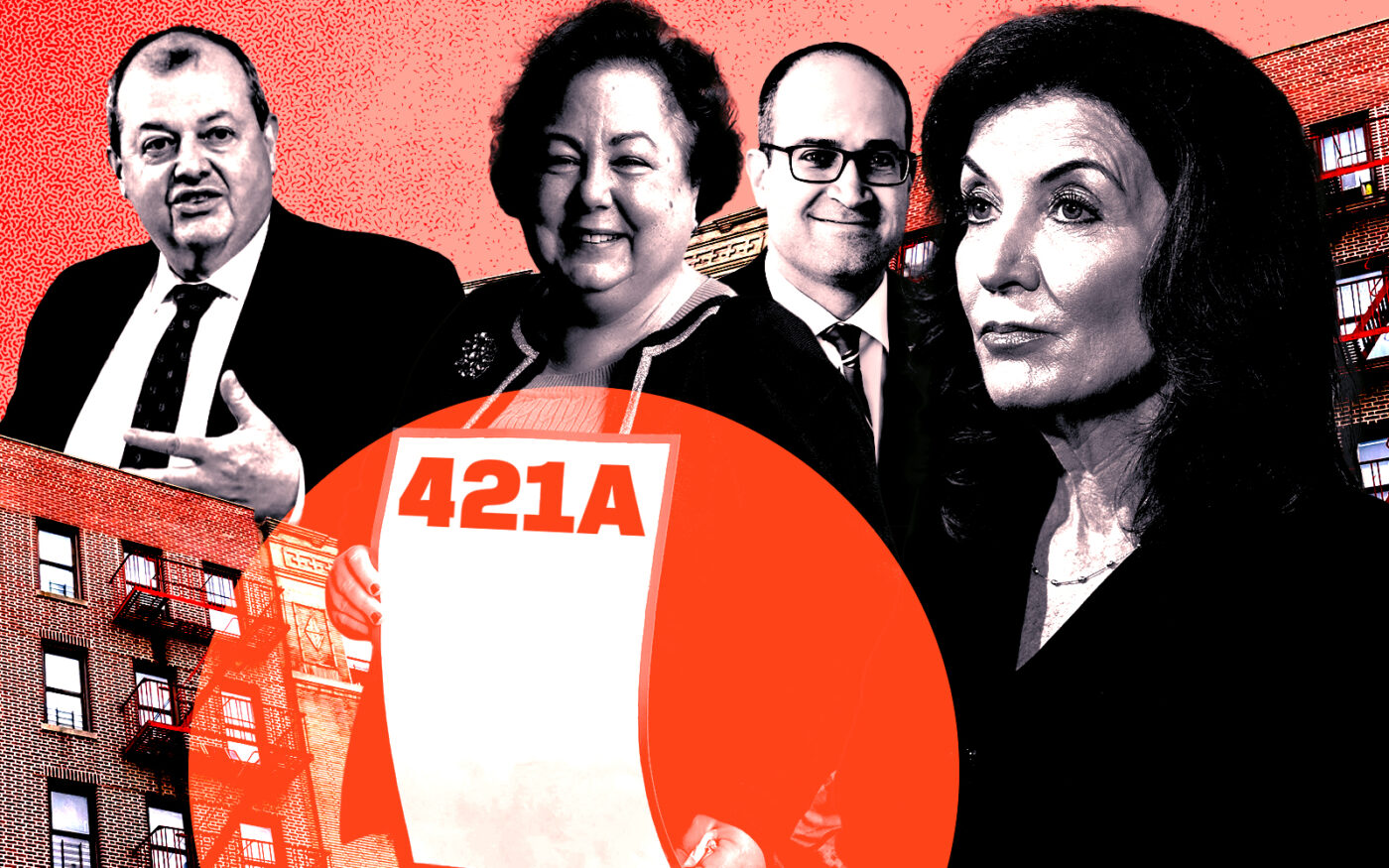Lawmakers could spare affordable projects from 421a deadline
Action might preserve tax break for Innovation QNS, Halletts North

By some estimates, tens of thousands of planned housing units will not be built unless the state extends a construction deadline for rental projects to get the 421a property tax break.
The good news for developers is that lawmakers are considering doing that, even after happily letting the program expire for new projects last year.
The bad news is that the deadline might be extended only for projects with much more than 421a’s standard level of affordability.
Gov. Kathy Hochul has pitched extending the construction deadline for all 421a developments by four years, meaning that qualified projects — those that had foundation footings in place by June 15, 2022 — would have until 2030 to wrap up.
On Wednesday, lawmakers pushed back against Hochul’s proposal, but floated the possibility of exempting certain projects from the June 15, 2026, deadline.
During a joint hearing on the governor’s housing proposals, Sen. Liz Krueger, who prefaced her comments by saying she is long-time opponent of 421a, declared that it would be “a tragic mistake” to extend the construction deadline by four years.
She noted, however, that there was a “reasonable” proposal to extend the deadline for projects where the city had negotiated deep affordability as a condition of approval.
A spokesperson for Krueger confirmed that Innovation QNS and Halletts North — projects where the city approved rezonings after the developers agreed to include significantly more affordable housing — would potentially be considered for exemption. (Innovation QNS would not qualify for the expired program because it was not far enough along by the June 2022 deadline, so it was not immediately clear how an exemption would be applied).
The developers of both projects have indicated that they need 421a to move forward; without it, lenders would consider the project too risky to finance.
Krueger’s spokesperson said the alternative proposal is the result of “internal discussions among legislators who strongly oppose the governor’s proposal” and would apply to individual projects “with strong affordability provisions and community support to be selectively allowed some time frame of extension.”
Jim Whelan, president of the Real Estate Board of New York, said he hopes lawmakers focus on policies that will produce more rental housing “rather than embrace failed NIMBY arguments that have done nothing to address the crisis.”
“It’s unfortunate to hear these comments from Senator Krueger, whose district has lagged behind the rest of the city in recent housing production and includes some of the wealthiest neighborhoods in the world,” he said in a statement. Krueger represents the Upper East Side and Midtown.
Linda Rosenthal, who chairs the Assembly’s housing committee, said it was “troubling” that there is no data on how many projects would be affected by the governor’s extension. But RuthAnne Visnauskas, commissioner of the state’s housing regulator, noted that trade organizations have provided estimates.
A REBNY survey estimated that some 33,000 planned apartments would not be built if developers were not given more time to finish 421a projects.
It is not clear how many projects were grandfathered under the now-expired program because developers do not officially apply for the tax break until construction is completed. (Developers have bemoaned the elimination of a preliminary certification process, provided by the city ahead of completing construction, that was part of an earlier iteration of the tax break.)
Much of the hearing focused on the governor’s New York Housing Compact, which would compel downstate localities to facilitate 1 percent annual housing growth, focused within half a mile of MTA rail stations.
Opponents have been blasting the plan as a “top down” decree that threatens towns with an explosion of new construction. But others say it gives localities too much freedom to choose the type of housing they allow.
Some Senate and Assembly Democrats on Wednesday said the governor’s goals were laudable, but expressed concerns about the lack of affordability requirements in the housing targets. Hochul would permit towns to allow less than 1 percent housing growth if some homes were income-restricted, and grants them flexibility in setting those limits.
Several lawmakers also criticized the governor’s budget for leaving out tenant protections, including good cause eviction, as well as other proposals, such as a state-based housing voucher program and the Tenant Opportunity to Purchase Act, which gives tenants the first crack at buying their building when their building goes up for sale.
“There is nothing in the budget that addresses what happens today,” Rosenthal said.
Assembly members Jo Anne Simon and Harvey Epstein also voiced concern about lifting the cap on the city’s residential floor area ratio. Simon represents Boerum Hill, where some row house residents object to towers rising along Flatbush Avenue in Downtown Brooklyn. Epstein represents the Lower East Side and East Village. Their districts could get denser buildings under the proposal.
Sen. Rachel May of Syracuse also cautioned that while ramping up housing construction, the state needs to be mindful of exacerbating concentrated poverty and sprawl.
Republican lawmakers from Nassau and Suffolk counties repeatedly questioned how their municipalities will be able to pay for the infrastructure upgrades and expansions they claimed would be needed to accommodate increased density mandated under Hochul’s Housing Compact.
They said the governor’s proposal to create a $250 million infrastructure support fund would not be nearly enough. Visnauskas said the funding would be a starting point.
But some say the additional housing is a non-starter, period.
“This density cannot and will not work in Nassau County,” said Assembly member Edward Ra, who represents Hempstead, North Hempstead and Oyster Bay.
Ra claimed localities would not have much say in how to meet the governor’s housing goals. He said the requirement to build 50 units per acre around transit stations tells municipalities “this is how you get there.”
Read more
Visnauskas countered that localities will be able to decide the mix of housing — townhouses or multifamily, for example.
Wednesday’s hearing came exactly one month before the state’s budget is due, and provided a snapshot of how lawmakers feel about the governor’s housing proposals. Many of the measures face an uphill battle, one that Hochul doesn’t have much time to win.






